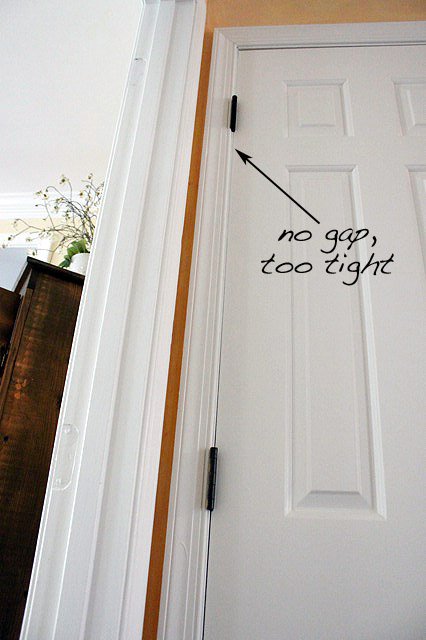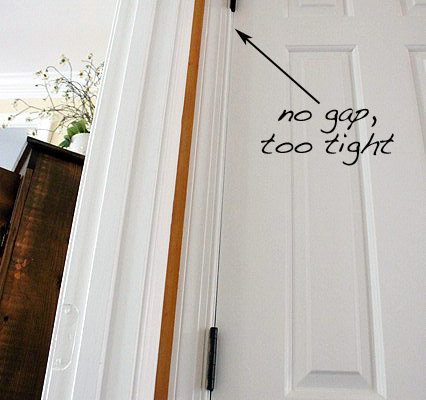
Whether you’re dealing with a wooden door, a metal door, or even a sliding one, understanding why it’s sticking is the first step. Often, it’s due to changes in the frame or the door itself—like the way wood expands and contracts with temperature and humidity. Let’s dive in and explore how to troubleshoot a door that’s too tight in the frame, step by step.
Identifying the Problem
Before you grab your toolbox, it’s important to first identify the problem accurately. A door that doesn’t open smoothly may be tight due to a few common reasons.
Start by examining the hinges. Are they rusty or misaligned? Sometimes, a simple tweak can fix the issue. Next, check the door frame. Look for signs of damage, like cracks or swelling. Temperature and humidity changes can cause wooden doors to swell, especially in places with very humid weather. If your door feels tight only during specific seasons, this might be the culprit.
Another aspect to consider is the door itself. Has it shifted over time? As homes settle, doors can become misaligned. It’s a common occurrence, so don’t worry; it happens to everyone!
Tools You’ll Need
Before starting the troubleshooting process, gather a few essential tools. Here’s a quick list to make sure you’re prepared:
- A screwdriver
- A level
- A tape measure
- Sandpaper (if needed)
- Lubricant oil (like WD-40)
Having these tools on hand can save you a lot of time and frustration. Trust me, it’s always better to be prepared than to have to make an extra trip to the hardware store mid-project.
Adjusting the Hinges
If you suspect the hinges might be the issue, it’s time to take a closer look. Misaligned or damaged hinges can contribute significantly to a door sticking in its frame.
Start by checking if the screws on the hinges are tight. Loose screws can cause the door to sag, affecting how it fits into the frame. If they’re loose, just tighten them with a screwdriver. If the hinges themselves look worn out or bent, it might be worth replacing them altogether.
Here’s a tiny tip: when replacing hinges, pick ones that are the same size as the ones currently installed. This way, you won’t have to create new holes in the door, which can lead to more problems.
Checking the Door Frame
Next, let’s turn our attention to the door frame. A tight fit might be caused by the frame itself, which can warp or shift over time.
Check for gaps around the frame. If one side of the door seems tighter than the other, that could indicate a twist in the frame. Use a level to determine if your door is hanging straight. If it’s not, you may need to adjust the frame by tightening or loosening screws on the frame’s mounting.
In some cases, applying a little pressure to the door while you check may help. Just make sure you pay attention to any signs of cracks or severe warping, as those issues might require professional help.
Sanding Down the Door
If adjusting the hinges and frame doesn’t solve the problem, it might be time to consider sanding down the door. This is especially true if the door has swollen due to humidity.
Carefully remove the door from its hinges and place it on a stable surface. Using sandpaper, gently sand the edges that are sticking, making sure not to remove too much material. A little goes a long way, so take your time. After sanding, rehang the door and check if it opens smoothly.
Remember to seal the door afterward, especially if it’s wooden, to prevent future swelling.
Lubricating the Hinges
Sometimes the solution is simpler than you think! If the door is hard to open, it might just need a bit of lubrication.
Spray a small amount of lubricant oil—like WD-40—on the hinges and swing the door back and forth a few times. This helps reduce friction and allows the door to move more freely. Lubricating the hinges is a good routine maintenance step, so don’t forget to check them regularly, especially if you notice any sticking.
When to Call a Professional
Even after trying these steps, if your door remains stubbornly tight in the frame, it might be time to call in a professional. Don’t hesitate to reach out if you’re unsure about the repairs, especially if there’s significant warping or potential structural issues.
Professionals can help assess the situation accurately and provide solutions tailored to your needs. Doors are essential for both functionality and security, so it’s important to address issues thoroughly.
Dealing with a door that’s too tight in the frame can be annoying, but with the right approach, it’s often a manageable situation. By identifying the problem, adjusting hinges, checking the frame, sanding down the door, and occasionally lubricating the hinges, you can return your door to its smoothly operating self. Remember, home maintenance doesn’t have to be overwhelming. Tackle these small projects with confidence, and soon, you’ll have a door that fits just right. Happy fixing!
